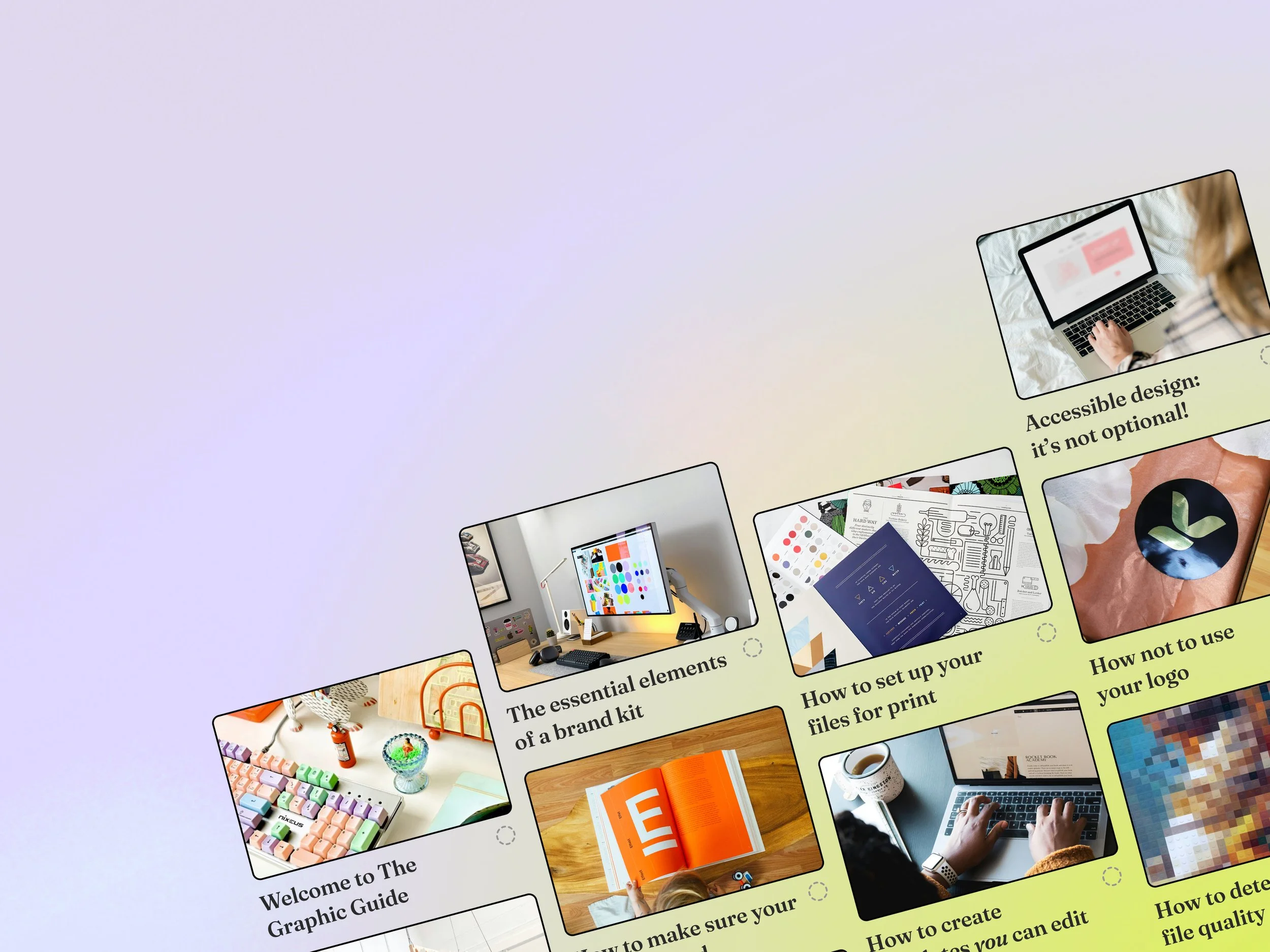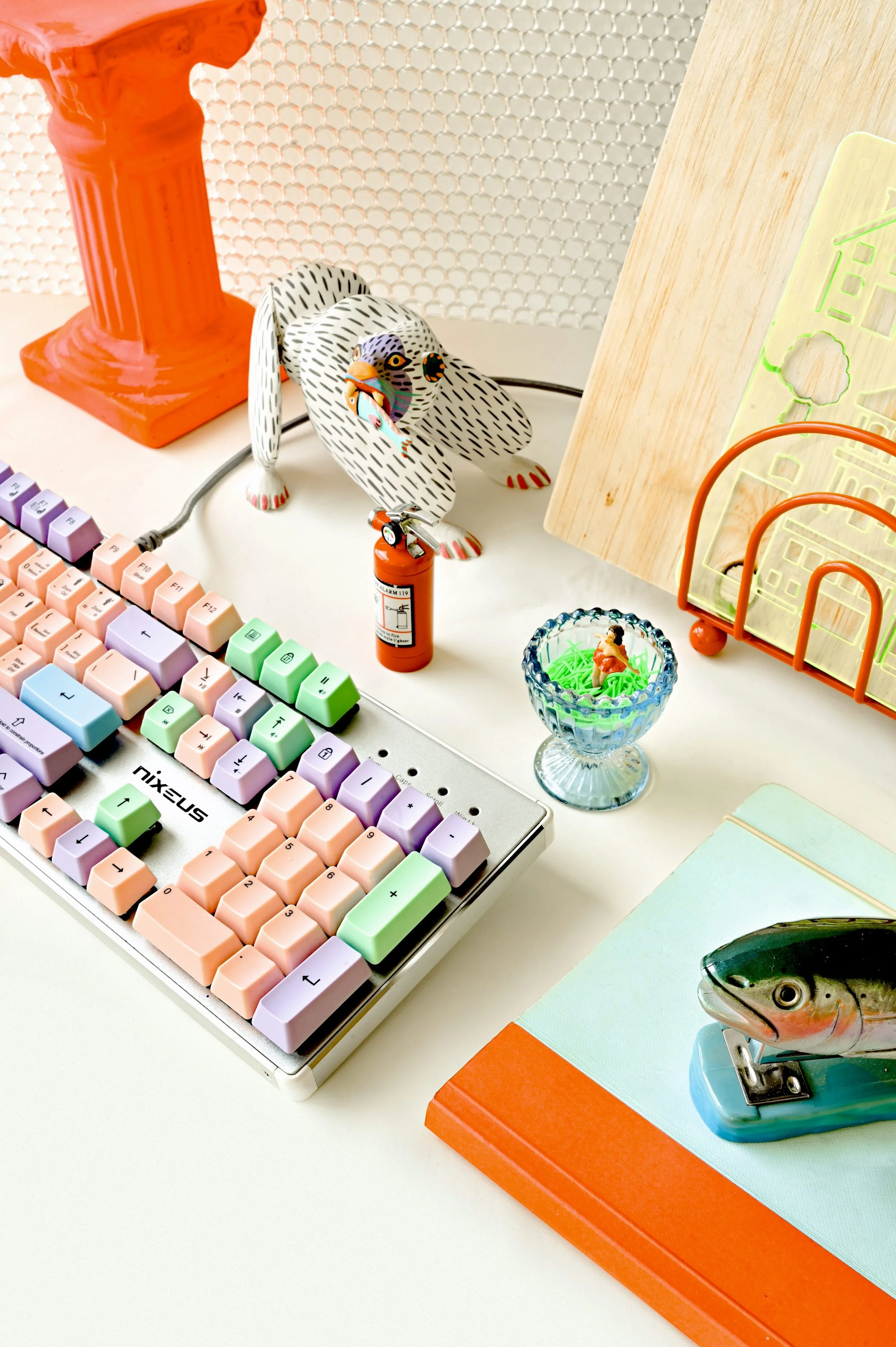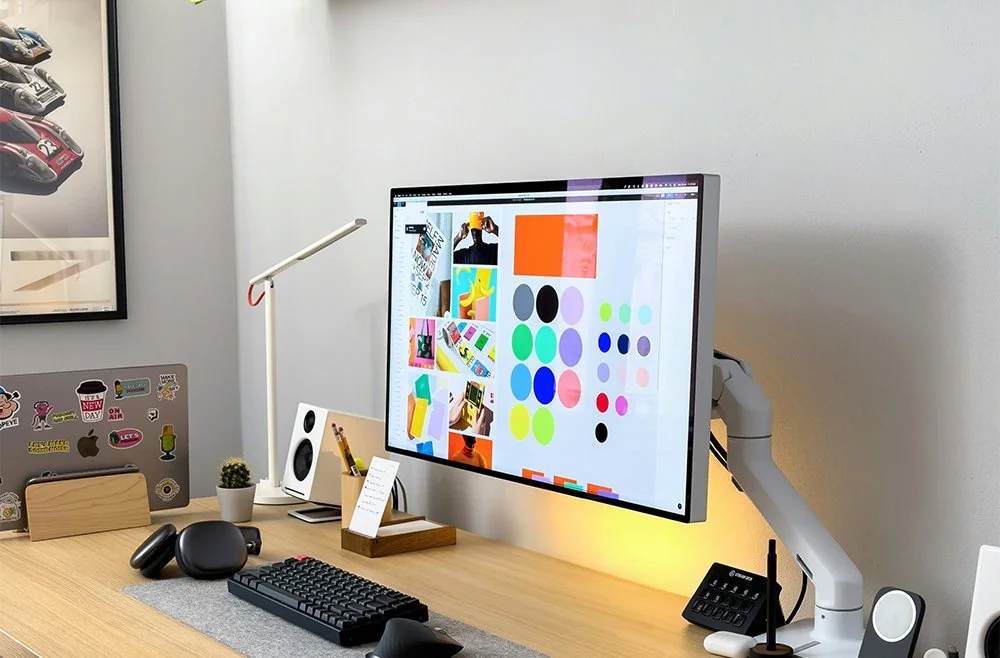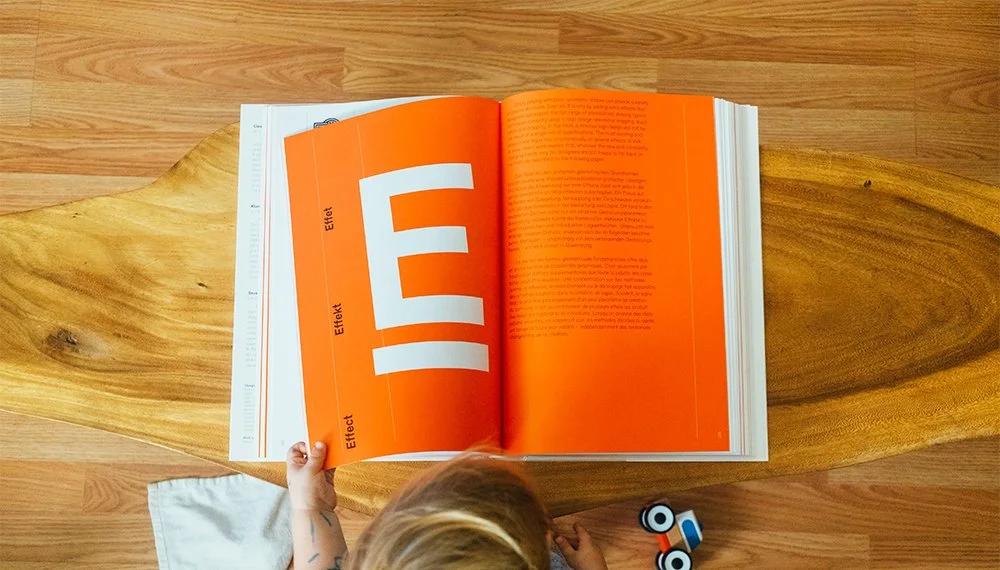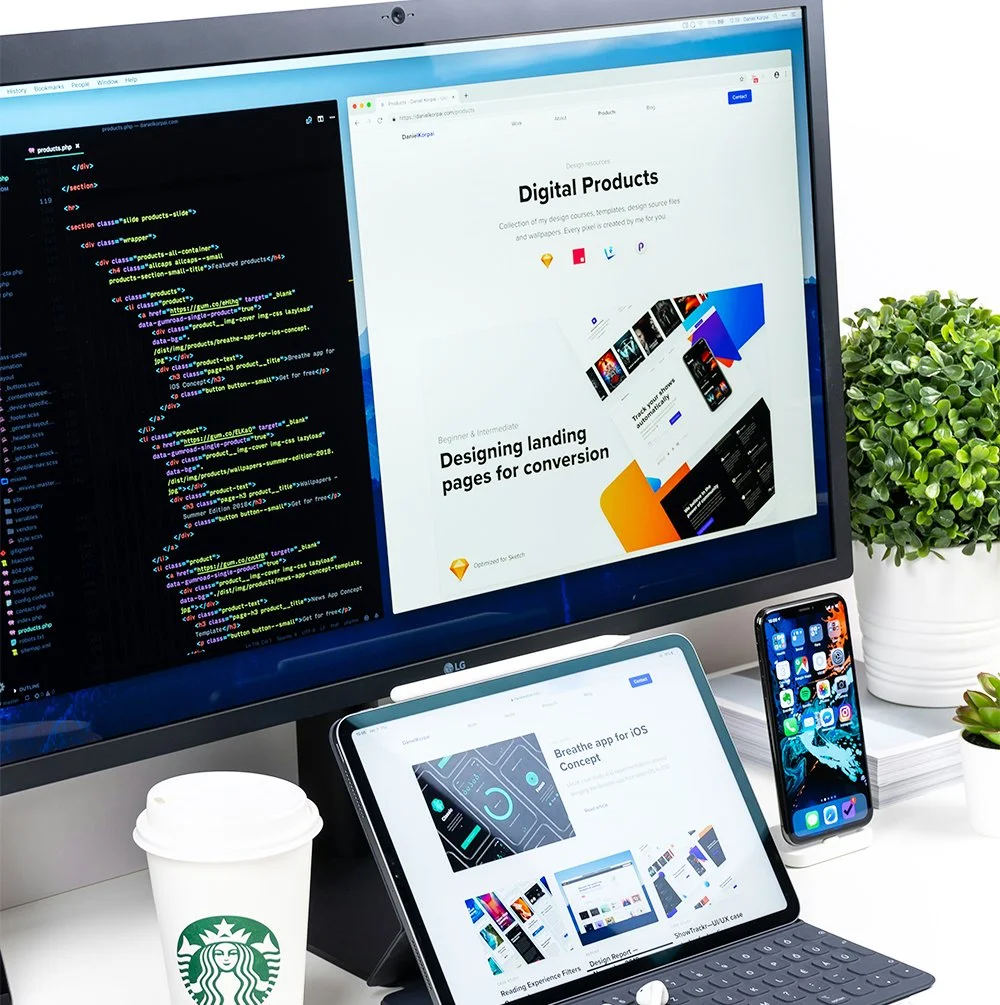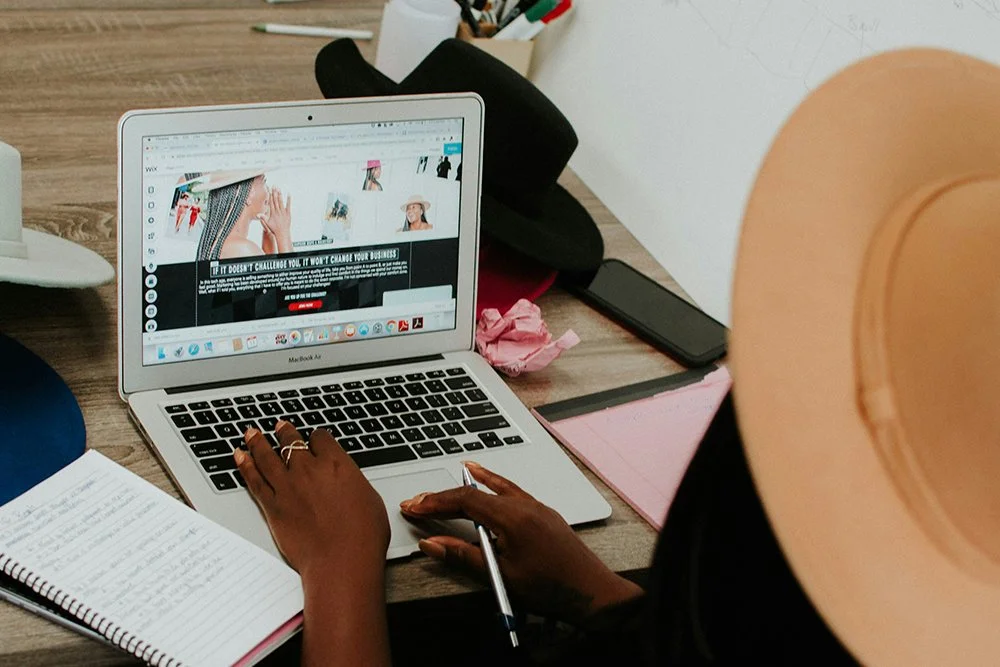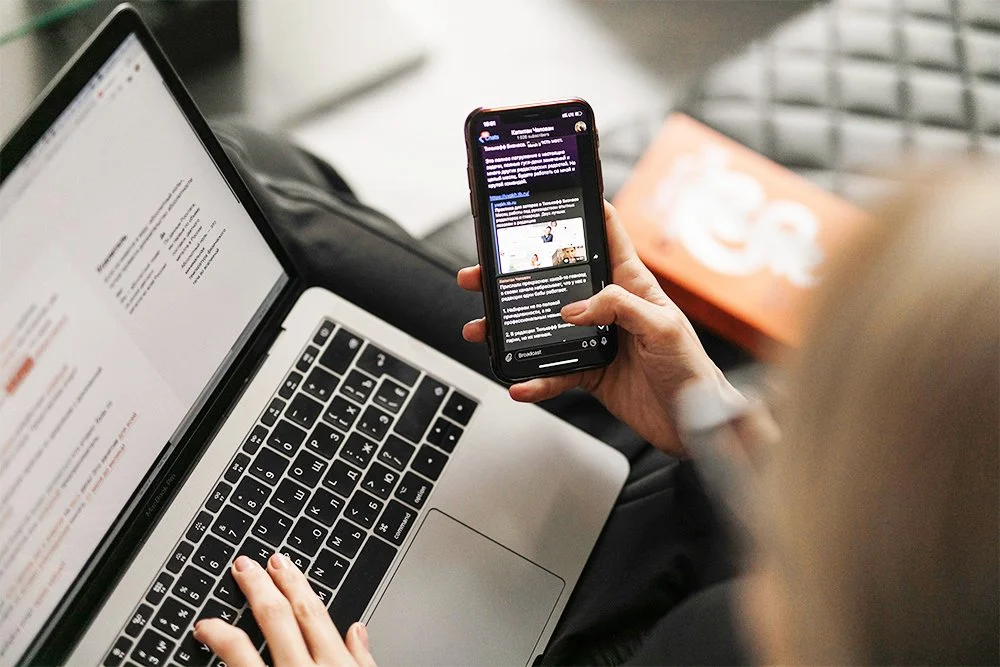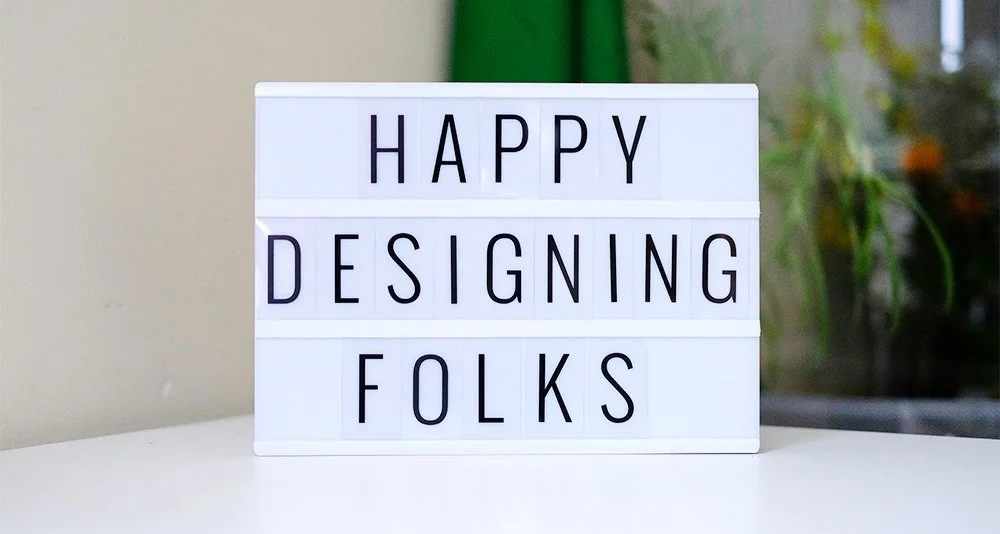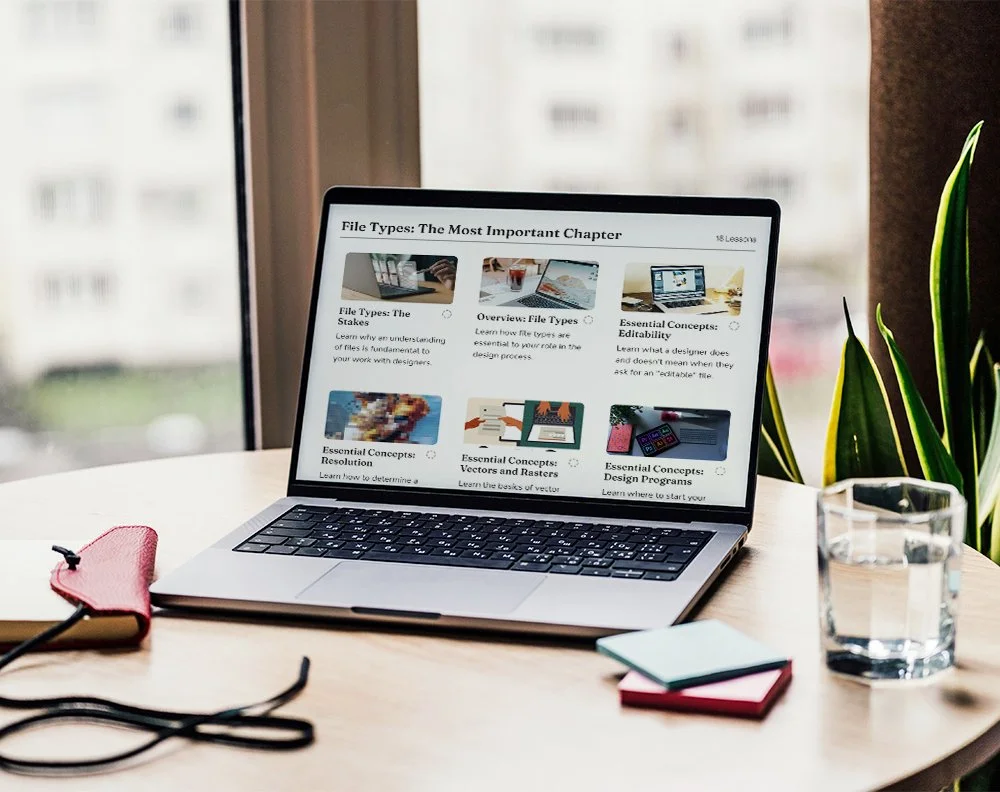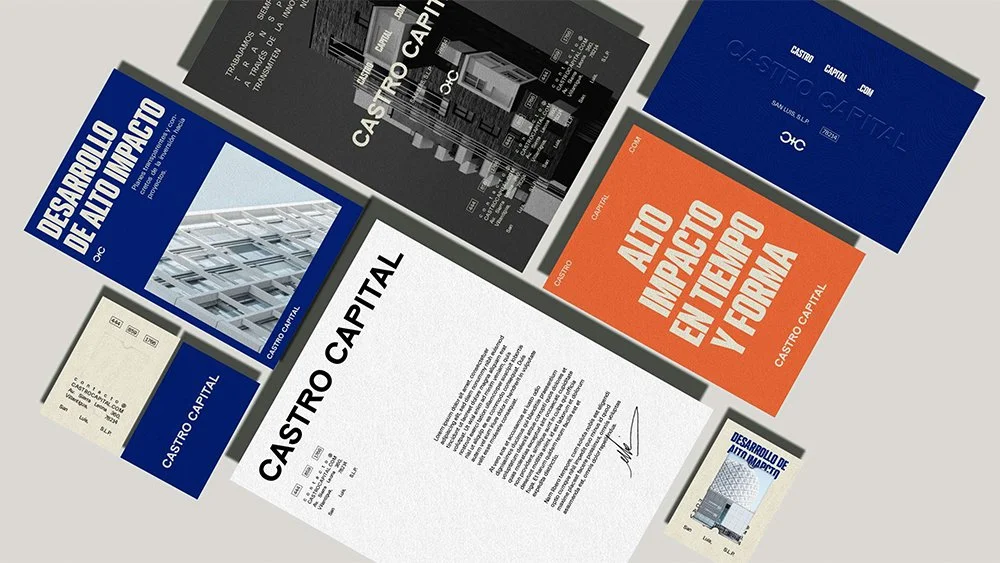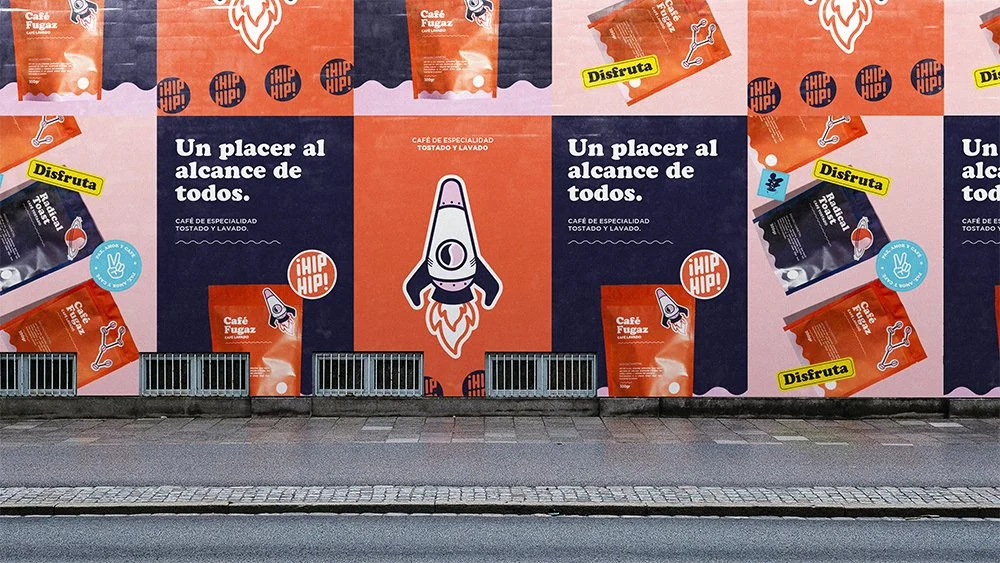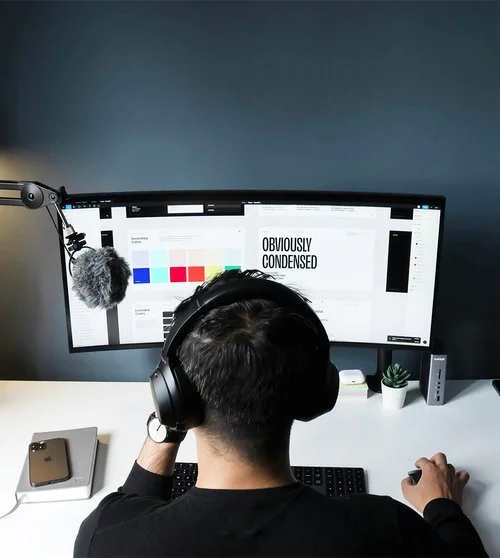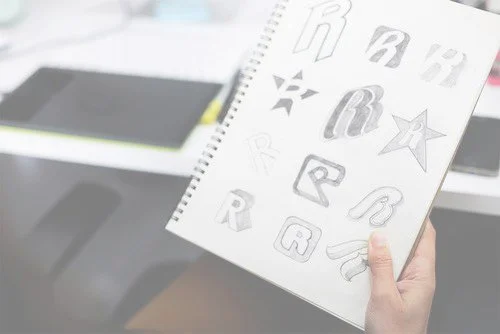Graphic design is a big investment.
Make sure it’s working for you.
If you ever work with graphic designers, your success depends on basic design knowledge. But where do you even start? How do you know what you don’t know? How do you hunt down answers that are scattered all over the place? How do you know what is true, or what applies to you? And how do you make sure you have that knowledge on hand when you actually need it?
The basics of graphic design are so badly understood, even many designers don’t understand them all. So how on earth would you?

Learn how to get what you need from your design team.
Graphic design is one of the most gatekept industries. In over 15 years as a graphic designer, I’ve learned the design process is a mystery to most non-designers. So many people are intimidated by the design process — and with good reason. Graphic design is expensive, and the last thing you want is to waste your investment on results that don’t work for you or match your vision.
Whether you’re looking to create a new brand or website, or working with a design team longterm, you need to make sure you’re armed with the knowledge and tools to get what you need out of the project, communicate effectively with your designer, provide them with the information and assets they need to deliver the best results, and use your designs to the max once they’re created.
Does any of this sound familiar?
You’ve had designers give you what you asked for, only to find out it wasn’t what you needed.
There’s a disconnect between the feedback you provide your designer and the changes you get back.
You know how to tell if you like a design, but not whether or not it will support your goals
You want to know more about graphic design, but don’t know where to start.
You know your business needs design, but not what you actually need.
You want to create design materials for your own business without sacrificing quality.
You keep providing your designer with files and content they say won’t work for your project.
You didn’t realize you’d need to know so much about graphic design for your (non-design) job.
You’re ready to invest in design, but concerned about wasting your money .
You don’t know where to start with price or timeline
You feel overwhelmed and under-informed when working on design projects.
You have a logo, brand identity, or other design materials you don’t know how to use.
You love beautiful design.
You know what kind of design you want, but not how to ask for it.
Graphic designers continually throw words and concepts at you that you don’t understand
You didn’t know accessibility was a mandatory design element until reading this sentence
You don’t know what you don’t know about using design to build your brand and reach your goals.
Meet…
The Graphic Guide
A self-paced course and design reference for people who work with designers.
WHAT IS THIS COURSE?
The Graphic Guide demystifies the technical and creative process for people who work with graphic designers.
This course will teach you what to ask for, how to implement the results, how to understand your designer, and how to communicate your needs in order to avoid lost investment.
WHO IS THE GRAPHIC GUIDE FOR?
Marketing professionals, business owners, brand managers, project managers, team leaders, or anybody else who works with designers.
Whether you’re working with a design team, freelancers, or even AI, this course will teach you how to get beautiful, functional results that maximize your ROI.
What will The Graphic Guide teach you?
This course includes over 130 essential lessons and references, broken down into helpful, easy-to-navigate chapters that you can work through in order or use as a quick reference on a project-by-project basis. All chapters are brought to life with clear and entertaining illustrations. Here’s an overview of what we cover in this course:
CHAPTER 1
Introduction
We demystify the design process – your role, your designer’s role, and ways being an informed client will affect your outcomes.
7 lessons, including:
What to expect
How to use this course
What do graphic designers do?
What can my graphic designer do?
What industries speak design language?
File Types: The Most Important Chapter
CHAPTER 2
You gain a comprehensive, fundamental and indispensable understanding of design files – what to look for, what to ask for, how to edit them, and essential concepts that will make or break your work with designers and vendors.
16 lessons, including:
Vectors vs. Rasters
Resolution
Fundamentals of editability
Exact usage for each file type
Sourcing editable files
Asking for useful files
Common files for common deliverables
Converting file types
Troubleshooting common file problems
So On Brand: An Introduction to Brand Standards
CHAPTER 3
You learn exactly how to work with your designer to develop and use a highly functional and beautiful brand kit, including a logo, colors, fonts, and other elements that bring your brand to life
6 lessons, including:
Standards vs. kits vs. assets
The elements of a brand kit
How to follow the rules
How to break the rules
How to change the rules
Just My Type: An Introduction to Typography
CHAPTER 4
You learn how to ensure every word in your design works towards your goals through typography that communicates your message and strengthens your brand.
11 lessons, including:
Fonts vs. typography
Principles of typography
Practical font usage
Pros, cons, and connotations of different fonts
Type hierarchy
Font licensing
Making a backup plan
It's Simple Color Theory: An Introduction to Color
CHAPTER 5
You learn how to both choose and use colors, so you can develop color palettes that strengthen your brand and message, and practically implement your colors so they show up the same way everywhere.
11 lessons, including:
The fundamentals of color space
How to set up color differently for print and digital use
What actually is Pantone (and how can it help you)?
How to use color in atypical settings
How to use your brand colors
How to use (and not use) color theory to inform your color choices
Finding Your Logo-Rhythm: Developing and Using Logos
CHAPTER 6
You learn how to work with your designer to develop a powerful logo that works in every context you need it to, as well as how to use your logo in a way that strengthens your brand, and makes it look both confident and professional.
10 lessons, including:
The logo layouts you need
The logo colors you need
The logo color spaces you need
The logo files you need
How to organize your logo files
How to integrate your logo into designs
How to use your logo to strengthen your brand
Accessible Design: It's Not Optional
CHAPTER 7
Learn the principles of creating design that is accessible to all users – particularly disabled users – through color, typography, asset creation, information organization, and more.
7 lessons, including:
The importance of accessible design
Accessible color and contrast
Accessible typography
Accessible information
Accessible assets
Tools and continued learning
Implementation: Preparing For Print
CHAPTER 8
Learn how to make sure your designs are set up correctly to print, avoiding costly errors caused by color, dimensions, resolution, and other common mistakes.
11 lessons, including:
Decoding print specifications
Dimensions and dielines
Bleed and margins
Print resolution
Color and print treatments
Mockups and proofs
Bonus setup tips
Saving and sending files
Working with your printer
Implementation: Preparing for the Web
CHAPTER 9
Learn how to work with your designer to build a beautiful and functional website that meets all your technical goals, aesthetic requirements, budget, and longterm editing needs.
10 lessons, including:
Essential technical terms
Coding languages: the least you need to know
Roles in the web design process
Responsive design
Web file size and resolution
Setting the scope
Choosing a platform
The Empowered Client: Editing Files Yourself
CHAPTER 10
Learn how – and when – to work with your designer to save money and time by developing designs you’re empowered to work with and edit yourself.
6 lessons, including:
The benefits and risks of editing your own designs
How/if to edit existing designs
Developing editable templates
A comparison of client-friendly design programs
Working Together: Preparing the Brief
CHAPTER 11
Learn how to prepare an effective brief that yields the results you want, and ensures the most efficient use of your time.
7 lessons, including:
The difference between briefs, RFPs and creative requests – and when to use each
Developing an RFP
Writing a brief
Sending a creative request
What to bring to each type of request
What to do if you don’t know what you need
Working Together: Giving and Getting Feedback
CHAPTER 12
Learn how to formulate and deliver effective and informed feedback, that gets you efficiently from round 1 to a finished product you love.
5 lessons, including:
The principles of clear, effective feedback
The logistics of presenting feedback
Feedback as a dialogue
Good feedback vs. bad feedback (helpful vs. unhelpful feedback)
CHAPTER 13
Working Together: Content
Learn how to deliver the visual and verbal content your designer needs to do their job – or work with your designer to develop and source content specially crafted to your project.
15 lessons, including:
An overview of content types
What content to come in with
Using placeholder content
Sharing and integrating real content
Developing content together
Benefits, drawbacks and function of stock content
Sourcing stock content
Common stock pitfalls
Helpful stock resources
Content purchasing guide
Benefits and drawbacks of AI
AI copy
AI image generation
Working Together: Developing Scope
CHAPTER 14
Learn how to set and negotiate the scope of your project to optimize the final result for your budget, timeline, aesthetic, and functional needs.
5 lessons, including:
Setting and negotiating scope
Knowing your needs
Setting timelines
Pricing
Helpful stock resources
Content purchasing guide
How to Tell if Design is Good: General Principles
CHAPTER 15
Learn the principles of “good” design, and how they relate to your project in order to guide your feedback and judge how the designs you receive will, or won’t work towards your goals.
9 lessons, including:
Overarching principles of design
Form vs. function
Pros and cons of beauty
Minimalism vs. ornament
Simplicity vs. thoroughness
Trendy vs. timeless
“Correct” vs. appealing
Accounting for accessibility
CHAPTER 16
Final thoughts
We review what we have learned and empower you to go forward implementing what you have learned in this course!
But wait, there’s more!
In addition to 24/7 access to the indispensable, entertaining, and highly informative content of this course, you also get access to quarterly Zoom Q+A calls with me to answer questions and explore topics in more depth, as well as access to a group Slack channel with me and fellow students to discuss course content as you move through.
Don’t hire a designer before you take this course.
A Plan for Every Need
The Graphic Guide comes with three plan options, depending on whether you prefer to learn independently with instructor support, to receive one-on-one coaching adapted to the unique needs of your career or position, or to use this course fully independently, or as a desk reference as project needs arise.
The reference plan gives you full access to the content of The Graphic Guide as a reference, with no instruction component. This plan is best for people who already have a comprehensive knowledge of graphic design, and want a refresher, as well as easy access to essential information for their work on design projects. Note that this plan is fully independent, and does not include any instruction component.
The learning plan gives you full access to all content in The Graphic Guide, as well as access to quarterly group Zoom Q+A calls, and access to a Slack channel with me and your fellow students. This plan is best for most users, as your learning process is supported with expert instruction, allowing you to ask any questions you have as you go through the course or as they come up in your work.
In addition to The Graphic Guide content, quarterly group Zoom Q+A calls, and access to the Slack channel with me and your fellow students, the Coaching Plan gives you access to monthly 1:1 coaching calls where we discuss lessons in the context of your position and needs, as well as a customized learning plan for yearly subscribers. This plan is best for people who work with designers as a fundamental part of their career, including brand managers, project managers, or marketing directors.
Hi, I’m Gabrielle!
I’m the founder of Aura Creative, creator of this course, and your partner in the design process. In over half a lifetime working in graphic design, I’ve discovered that clients’ goals are often undermined by the inaccessibility of design. So often, people come to me ready to pay for projects they don’t need, or asking for projects with specifications that won’t give them the results they want. I always take the time to educate my clients about what results will help them maximize their results and ROI, but not everyone has access to a resource to guide them through the process.
I developed this course to even the playing field for all design clients, sorting through the vast world of design knowledge to make sure you know exactly what you need to get the results you want.
My extensive client list includes Dandelion Energy, several projects of the International Rescue Committee including Switchboard and CARRE, The Irish Dance Teachers Association of North America, and Capitalize Money. I am a cum laude graduate of Barnard College, Columbia University. Before starting Aura Creative I worked both agency-side and in-house, giving me insight into the specific needs of each. I work regularly with brand managers, marketing directors, small-business owners, large-business owners, CEOs, project managers, marketing assistants, and clients whose jobs have nothing to do with design and marketing, whose brands simply need design.
Awards I have won for my design work include the GDUSA American Web Design Award and several medals from the International Visual Identity Awards. My writing has appeared in publications including Hey Alma, The Irish Dancing Globe, and Teen Vogue.
I look forward to getting to know you and joining you on your design journey!
Meet your teacher
✳
Meet your teacher ✳
What will this course give me?
This course gives you an essential toolkit to ensure your work with graphic designers yields specific, tangible results that work directly toward your goals. Your designer may be doing the actual design work, but the way you manage your project, what you ask for, what you come in with, how you communicate needs, scope, and feedback, and your knowledge of the technical side of the process can make or break the quality of your results, and determine whether you get designs you can actually use.
This course is designed to guide you through a wide variety of design processes, and to apply well beyond the specific projects covered by the content. A small selection of what this course can help you work with your designer to develop includes…
Comprehensive brand kits and guidelines, including logos for every context, dynamic color schemes, beautiful typography, and the instructions you need to use each element correctly.
A website that meets your technical needs, aesthetic needs, and budget on a platform that empowers and supports your long term goals.
Print design – like brochures, mailers, business cards, banners, large-scale POS, packaging, and much more – with precise coloring and layout, and crisp graphics, that optimizes your budget and quality needs.
Ad campaigns that maintain precise brand consistency across both print and digital media, including social media, magazines, OOH, and search/display placements.
Sign me up!
View full course details and learn more about creating your learning plan by clicking the link below!
